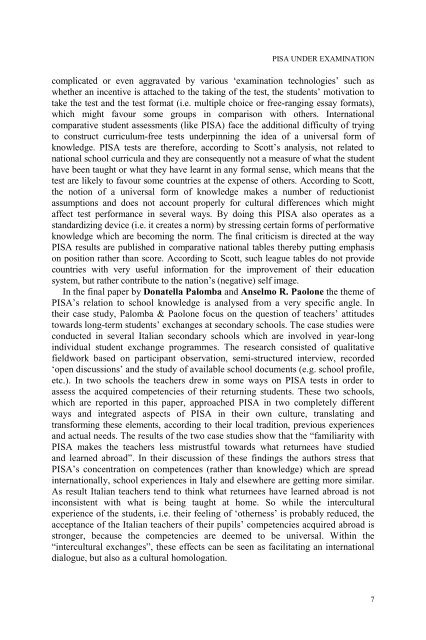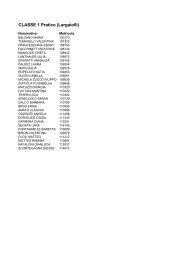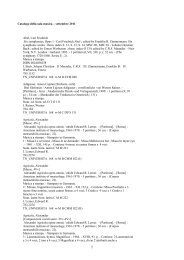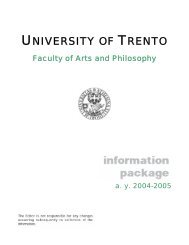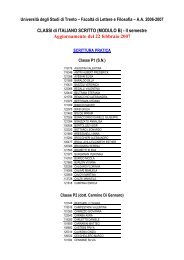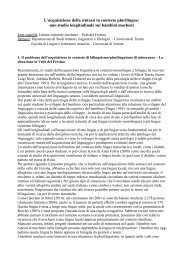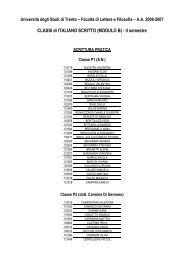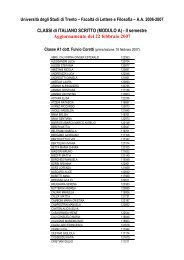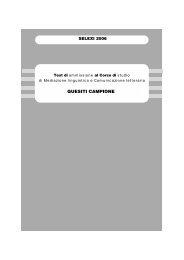PISA Under Examination - Comparative Education Society in ...
PISA Under Examination - Comparative Education Society in ...
PISA Under Examination - Comparative Education Society in ...
Create successful ePaper yourself
Turn your PDF publications into a flip-book with our unique Google optimized e-Paper software.
<strong>PISA</strong> UNDER EXAMINATION<br />
complicated or even aggravated by various ‘exam<strong>in</strong>ation technologies’ such as<br />
whether an <strong>in</strong>centive is attached to the tak<strong>in</strong>g of the test, the students’ motivation to<br />
take the test and the test format (i.e. multiple choice or free-rang<strong>in</strong>g essay formats),<br />
which might favour some groups <strong>in</strong> comparison with others. International<br />
comparative student assessments (like <strong>PISA</strong>) face the additional difficulty of try<strong>in</strong>g<br />
to construct curriculum-free tests underp<strong>in</strong>n<strong>in</strong>g the idea of a universal form of<br />
knowledge. <strong>PISA</strong> tests are therefore, accord<strong>in</strong>g to Scott’s analysis, not related to<br />
national school curricula and they are consequently not a measure of what the student<br />
have been taught or what they have learnt <strong>in</strong> any formal sense, which means that the<br />
test are likely to favour some countries at the expense of others. Accord<strong>in</strong>g to Scott,<br />
the notion of a universal form of knowledge makes a number of reductionist<br />
assumptions and does not account properly for cultural differences which might<br />
affect test performance <strong>in</strong> several ways. By do<strong>in</strong>g this <strong>PISA</strong> also operates as a<br />
standardiz<strong>in</strong>g device (i.e. it creates a norm) by stress<strong>in</strong>g certa<strong>in</strong> forms of performative<br />
knowledge which are becom<strong>in</strong>g the norm. The f<strong>in</strong>al criticism is directed at the way<br />
<strong>PISA</strong> results are published <strong>in</strong> comparative national tables thereby putt<strong>in</strong>g emphasis<br />
on position rather than score. Accord<strong>in</strong>g to Scott, such league tables do not provide<br />
countries with very useful <strong>in</strong>formation for the improvement of their education<br />
system, but rather contribute to the nation’s (negative) self image.<br />
In the f<strong>in</strong>al paper by Donatella Palomba and Anselmo R. Paolone the theme of<br />
<strong>PISA</strong>’s relation to school knowledge is analysed from a very specific angle. In<br />
their case study, Palomba & Paolone focus on the question of teachers’ attitudes<br />
towards long-term students’ exchanges at secondary schools. The case studies were<br />
conducted <strong>in</strong> several Italian secondary schools which are <strong>in</strong>volved <strong>in</strong> year-long<br />
<strong>in</strong>dividual student exchange programmes. The research consisted of qualitative<br />
fieldwork based on participant observation, semi-structured <strong>in</strong>terview, recorded<br />
‘open discussions’ and the study of available school documents (e.g. school profile,<br />
etc.). In two schools the teachers drew <strong>in</strong> some ways on <strong>PISA</strong> tests <strong>in</strong> order to<br />
assess the acquired competencies of their return<strong>in</strong>g students. These two schools,<br />
which are reported <strong>in</strong> this paper, approached <strong>PISA</strong> <strong>in</strong> two completely different<br />
ways and <strong>in</strong>tegrated aspects of <strong>PISA</strong> <strong>in</strong> their own culture, translat<strong>in</strong>g and<br />
transform<strong>in</strong>g these elements, accord<strong>in</strong>g to their local tradition, previous experiences<br />
and actual needs. The results of the two case studies show that the “familiarity with<br />
<strong>PISA</strong> makes the teachers less mistrustful towards what returnees have studied<br />
and learned abroad”. In their discussion of these f<strong>in</strong>d<strong>in</strong>gs the authors stress that<br />
<strong>PISA</strong>’s concentration on competences (rather than knowledge) which are spread<br />
<strong>in</strong>ternationally, school experiences <strong>in</strong> Italy and elsewhere are gett<strong>in</strong>g more similar.<br />
As result Italian teachers tend to th<strong>in</strong>k what returnees have learned abroad is not<br />
<strong>in</strong>consistent with what is be<strong>in</strong>g taught at home. So while the <strong>in</strong>tercultural<br />
experience of the students, i.e. their feel<strong>in</strong>g of ‘otherness’ is probably reduced, the<br />
acceptance of the Italian teachers of their pupils’ competencies acquired abroad is<br />
stronger, because the competencies are deemed to be universal. With<strong>in</strong> the<br />
“<strong>in</strong>tercultural exchanges”, these effects can be seen as facilitat<strong>in</strong>g an <strong>in</strong>ternational<br />
dialogue, but also as a cultural homologation.<br />
7


